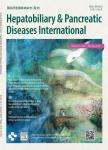Small-for-size syndrome in liver transplantation:Definition,pathophysiology and management
Small-for-size syndrome in liver transplantation: Definition, pathophysiology and management作者机构:Division of GastroenterologicalHepato-Biliary-PancreaticTransplantation and Pediatric SurgeryDepartment of SurgeryShinshu University School of Medicine3-1-1 AsahiMatsumotoNaganoJapan
出 版 物:《Hepatobiliary & Pancreatic Diseases International》 (国际肝胆胰疾病杂志(英文版))
年 卷 期:2020年第19卷第4期
页 面:334-341页
核心收录:
学科分类:1002[医学-临床医学] 100210[医学-外科学(含:普外、骨外、泌尿外、胸心外、神外、整形、烧伤、野战外)] 10[医学]
主 题:Liver transplantation Living donor liver transplantation Small-for-size graft Small-for-size syndrome
摘 要:Background:Since the first success in an adult patient,living donor liver transplantation(LDLT)has become an universally used ***-for-size syndrome(SFSS)is a well-known complication after partial LT,especially in cases of adult-to-adult *** definition of SFSS slightly varies among transplant *** use of a partial liver graft has risks of SFSS *** portal vein(PV)hypertension and PV hyper-perfusion after LT were identified as the main ***,various approaches were explored to modulate PV flow and decrease PV pressure in order to alleviate this ***,the definition,clinical symptoms,pathophysiology,basic research,as well as preventive and treatment strategies for SFSS are reviewed based on an extensive review of the literature and on our own *** sources:The articles were collected through PubMed using search terms“liver transplantation,“living donor liver transplantation,“living liver donation,“partial graft,“small-for-size graft,“small-forsize syndrome,“graft volume,“remnant liver,“standard liver volume,“graft to recipient body weight ratio,“sarcopenia,“porcine,“swine,and“rat.English publications published before March 31,2020 were included in this ***:Many transplant surgeons performed PV flow modulation,including portocaval shunt,splenic artery ligation and *** these techniques,patient outcome has been improved even when using asmall*** factors,such as preoperative recipients’nutritional and skeletal muscle status,graft congestion,and donor factors,were also identified as risk factors which all have been addressed using various ***:The surgical approach controlling PV flow and pressure could help to prevent SFSS especially in severely ill *** the absence of efficacious medications to resolve SFSS,conservative treatments,including aggressive fluid balance correction for massive ascites,anti-microbiological therapy t




